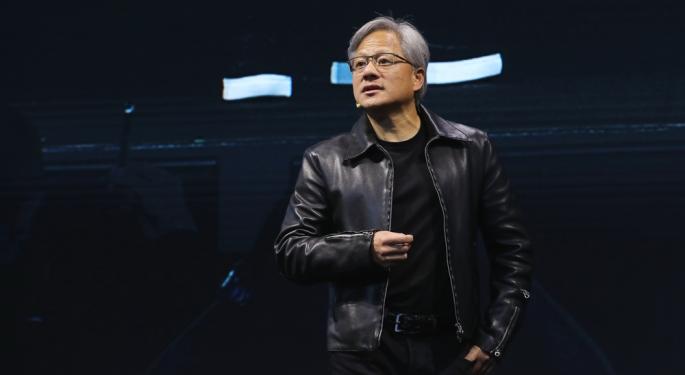Jensen Huang Was Asked In 2009 Whether Nvidia Could Ever Be As Big As Intel—This Is What He Said
On Feb. 5, 2009, Intel was the undisputed heavyweight of the semiconductor world. With a market capitalization of $79.3 billion, it towered over Nvidia, whose valuation sat at a modest $5.03 billion. That same day, Nvidia's CEO Jensen Huang appeared on Charlie Rose, where he was asked a question that now feels almost prophetic.
- NVDA stock is breaking records. See real-time prices here.
"Do you envision in your most expansive moments that Nvidia has the possibility of becoming as powerful and as huge as Intel?" Rose asked.
Huang's response was thoughtful, measured, and revealing:
"You know, I don't think in those terms necessarily. What's always top of mind for me and our company is, are we working on the most relevant things to drive the industry forward, to add value to the world. You know, you notice people talk about the competition between us and Intel today – and yet, we don't make a microprocessor. They want to make what we make, but at the moment, they don't either."
He added, "It's almost like Microsoft and Google – they don't make what each other makes, but they are competing against each other."
Huang's 2009 remarks showcased his far-reaching vision. Rather than measure Nvidia against Intel—the dominant chipmaker of the time—he emphasized relevance and innovation over rivalry. Huang dismissed direct competition, likening the dynamic to Microsoft vs. Google: different products, same battlefield. His focus on shaping the future, not chasing scale, hinted at Nvidia's pivot toward GPU computing and its eventual role at the center of the AI revolution. It wasn't about Intel—it was about transformation.
Nvidia Is 47 Times As Big As Intel Today
Fast forward to July 2025, and the landscape has flipped in ways few could have imagined. Nvidia is now the most valuable publicly traded company on Earth, with a market cap of $4.27 trillion. Intel, meanwhile, is struggling to stay afloat, its valuation hovering around $91 billion—just 15% above where it stood 16 years ago.
The reversal is staggering. Nvidia's rise has been fueled by the explosive growth of artificial intelligence. Since the launch of ChatGPT in late 2022, demand for Nvidia's GPUs—especially its H100 and Blackwell chips—has skyrocketed. These chips power everything from large language models to autonomous vehicles, and Nvidia now controls over 90% of the data center GPU market. By 2025, its revenue hit $130 billion, with $115 billion coming from its data center segment alone.
Intel, by contrast, has been caught flat-footed. It missed the mobile revolution, lagged in AI innovation, and has struggled to compete with Nvidia's dominance in high-performance computing. In July 2025, Intel announced it would cut about 25,000 jobs, abandon chip plant projects in Germany and Poland, and delay construction of its Ohio facility. CEO Lip-Bu Tan admitted the company had "invested too much, too soon—without adequate demand," and was now "making hard but necessary decisions" to streamline operations.
Huang’s Long-Term Vision
The contrast between the two companies is more than financial—it's philosophical. Huang's 2009 comments reflected a long-term vision rooted in relevance and innovation. Intel, once the gold standard of chipmaking, now finds itself playing catch-up in a world reshaped by AI.
In hindsight, Rose's question wasn't just speculative—it was a glimpse into a future where the underdog would become the architect of a new computing era. And Huang, with quiet confidence, was already laying the foundation.
Today, Nvidia isn't just bigger than Intel. It's bigger than Microsoft, Apple, and Amazon. And it all started with a company that didn't make what Intel made—but made what the future needed.
Read More:
Photo: Shutterstock
© 2025 Benzinga.com. Benzinga does not provide investment advice. All rights reserved.
Posted-In: Jensen Huang Stories That MatterTop Stories Tech



